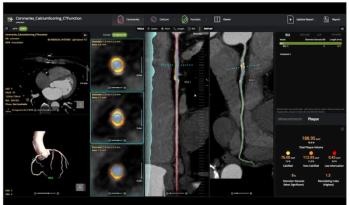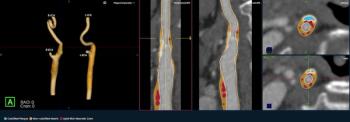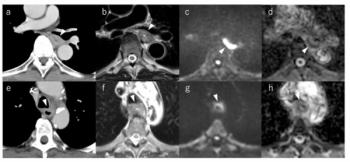
CT Not Always Needed to Rule Out Pulmonary Embolism
Patients who are at low risk for pulmonary embolism can be safely assessed with clinical criteria.
Computed tomography pulmonary angiography may not be needed to rule out suspected pulmonary embolism (PE) among low-risk patients, according to a study published in
Researchers from France performed a crossover cluster–randomized clinical noninferiority trial to validate the safety of the pulmonary embolism rule-out criteria (PERC), an 8-item block of clinical criteria, compared with conventional assessments which include CT pulmonary angiography.
A total of 1,916 patients with a low gestalt clinical probability of PE were cluster-randomized for the trial; 962 were assigned to the PERC group and 954 were assigned to the control group. The subjects’ mean age was 44 years and 980 were women (51 percent); 1,749 patients completed the trial. The primary end point was the occurrence of a thromboembolic event during the three-month follow-up period that was not initially diagnosed and secondary end points included the rate of computed tomographic pulmonary angiography (CTPA), median length of stay in the emergency department, and rate of hospital admission.
The results showed PE was diagnosed at initial presentation in 26 patients in the control group (2.7 percent) compared with 14 (1.5 percent) in the PERC group. One PE (0.1 percent) was diagnosed during follow-up in the PERC group compared with none in the control group. The proportion of patients undergoing CTPA in the PERC group versus the control group was 13 percent versus 23 percent. In the PERC group, rates were significantly reduced for the median length of emergency department stay (mean reduction, 36 minutes) and hospital admission.
The researchers concluded that PERC was a safe approach for very low-risk patients with suspected PE, and compared with conventional strategy, PERC did not result in an inferior rate of thromboembolic events over three months.
Newsletter
Stay at the forefront of radiology with the Diagnostic Imaging newsletter, delivering the latest news, clinical insights, and imaging advancements for today’s radiologists.

































